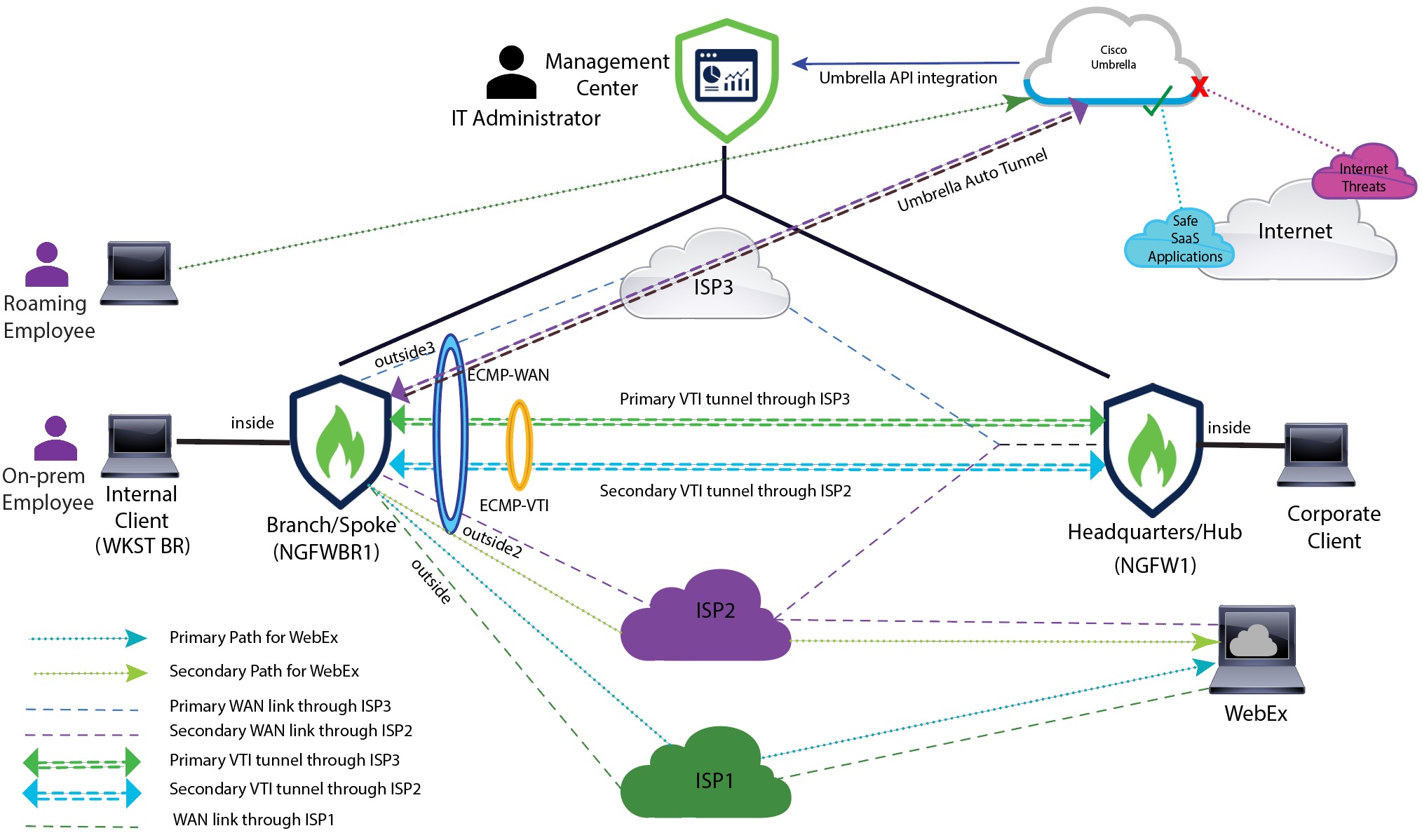Sally works as a remote sales representative for a global company that relies heavily on real-time collaboration and data
access. She frequently travels to different client locations, but faces challenges in accessing sales data and communicating
with colleagues.
What is at risk?
The company's existing network infrastructure is unable to provide seamless connectivity and secure access across multiple
locations, resulting in delays, data inconsistency, and communication breakdowns.
How does a solution consisting of DIA, Umbrella auto tunnel, and DVTI in a hub and spoke topology solve the problem?
To address the challenges faced by remote workers like Sally, her company implements a comprehensive solution using DIA, Umbrella
SASE auto tunnel, and DVTI.
-
DIA: DIA allows Sally to connect directly to the internet without routing through the corporate network. This provides her with
faster and more reliable internet access, enabling quick access to cloud-based applications and services. It offloads network
traffic from the corporate network, reducing congestion and optimizing performance.
-
Umbrella Auto tunnel: By leveraging the Umbrella Auto Tunnel configuration, Sally's company ensures that uniform security policies are applied
to traffic regardless of whether Sally is remotely connected or behind a branch firewall. It eliminates the need for manual
configuration of VPN connections and reduces the complexity and potential errors associated with traditional tunnel setups.
This technology offers simplicity, convenience, and enhanced security for Sally and other remote workers in the organization
-
DVTI: DVTI in a hub and spoke topology enables the dynamic creation of secure IPsec tunnels between the branch office and the corporate
network. These tunnels encrypt data transmission, ensuring secure access to corporate resources while working remotely. DVTI
also optimizes network performance by intelligently routing traffic through the most efficient path and providing redundancy
for uninterrupted connectivity.
By combining DIA, Umbrella SASE auto tunnel, and DVTI, Sally's company enhances her connectivity, security, and productivity
as a remote worker. She can access cloud applications quickly, collaborate seamlessly with colleagues, and enjoy a secure
and reliable connection to corporate resources, regardless of her location. The IT team benefits from centralized security
management, reduced network complexity, and improved visibility into remote workers' activities.

 Feedback
Feedback